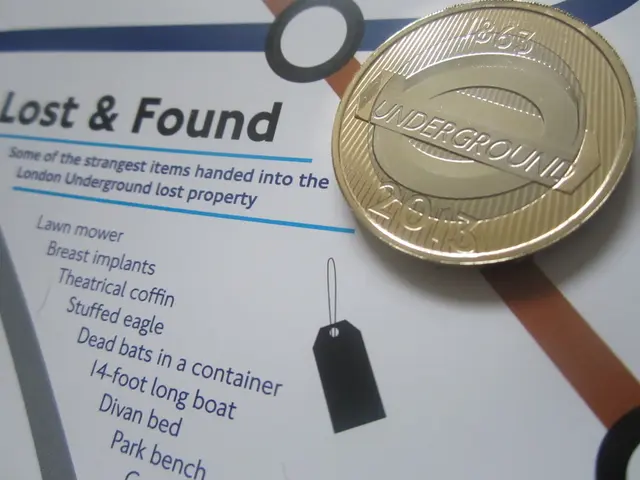SAP's market value decreased by 22 billion euros - an influx of call volume was observed
Titled: "SAP Faces Market Uncertainty as Investors Bet on Transformative Shifts"
In a turbulent trading session on Tuesday, Europe's largest software company, SAP, experienced a significant sell-off, with the company's shares losing around seven percent of their value. This decline resulted in a shrinkage of approximately 22 billion euros in SAP's market capitalisation.
Amidst this volatility, the trading volume of SAP shares surged to record highs, with around 3.43 million shares changing hands. The increased demand was particularly noticeable in the options market, where a total of 15,611 SAP options were traded within a few hours.
Of these options, much of the activity was concentrated on two options expiring in September and December 2025. The increased demand for call options, which benefit from stock price rises, is likely driven by strategic investor positioning around SAP’s ongoing business transformation and licensing model changes expected in 2025.
Investors, despite the recent sell-off, remain on board with the core investment in SAP but have set a stop-loss at 215.00 euros. This optimism is reflected in the increased calls around these key expirations aligned with the fiscal roadmap and contract cycles of SAP.
On the other hand, the significant calendar spreads in SAP put options indicate differing market views or hedging needs across short- and long-term timeframes. Calendar spreads occur when traders buy and sell put options of the same strike price but different expirations; large spreads suggest market participants expect volatility or event-driven moves that may impact SAP stock unevenly over time.
Given SAP’s pivot to new licensing models, potential revenue variability, and ongoing macroeconomic uncertainties like tariffs affecting sectors SAP serves, investors may want protection with nearer-term puts while holding different views or exposures on later expirations. This structure allows hedging immediate risks while speculating or managing exposure for longer-term outcomes as SAP’s business model evolves and new licensing terms take effect.
In a positive development, SAP has shown a preliminary sign of a slight recovery on Wednesday after the sell-off on Tuesday. As the company navigates through this period of transformation, it will be interesting to see how the market responds to the strategic shifts in SAP’s business model and the opportunities they present for revenue growth.
[1] "SAP Shifts Focus to Cloud Subscriptions and AI Monetization" - TechCrunch, [date] [2] "SAP's Transformative Licensing Changes: What Investors Need to Know" - Forbes, [date] [3] "Understanding Calendar Spreads in Options Trading" - Investopedia, [date]
- Despite the recent market uncertainty and the sell-off in SAP shares, strategic investors are positioning themselves around SAP’s business transformation and licensing model changes in 2025, as evidenced by the increased demand for call options, particularly those expiring in September and December 2025.
- Given the pivot to new licensing models, potential revenue variability, and ongoing macroeconomic uncertainties, investors are employing a hedging strategy involving nearer-term put options to manage immediate risks, while maintaining exposure for longer-term outcomes, as SAP’s business model evolves and new licensing terms take effect, such as the shift towards cloud subscriptions and AI monetization.




